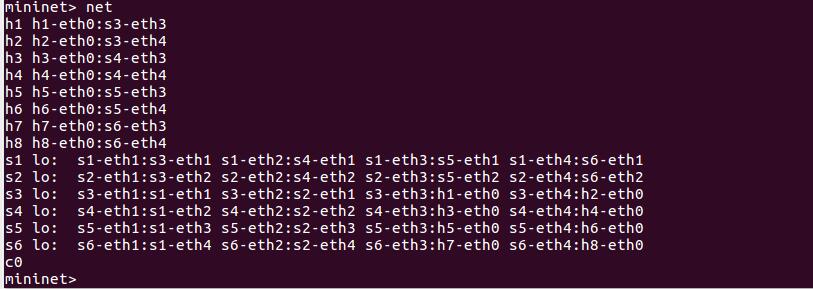1. 安装轻量级网络仿真工具Mininet
git clone git://github.com/mininet/mininet.git cd mininet git tag git checkout 2.3.0d6 ./util/install.sh -a
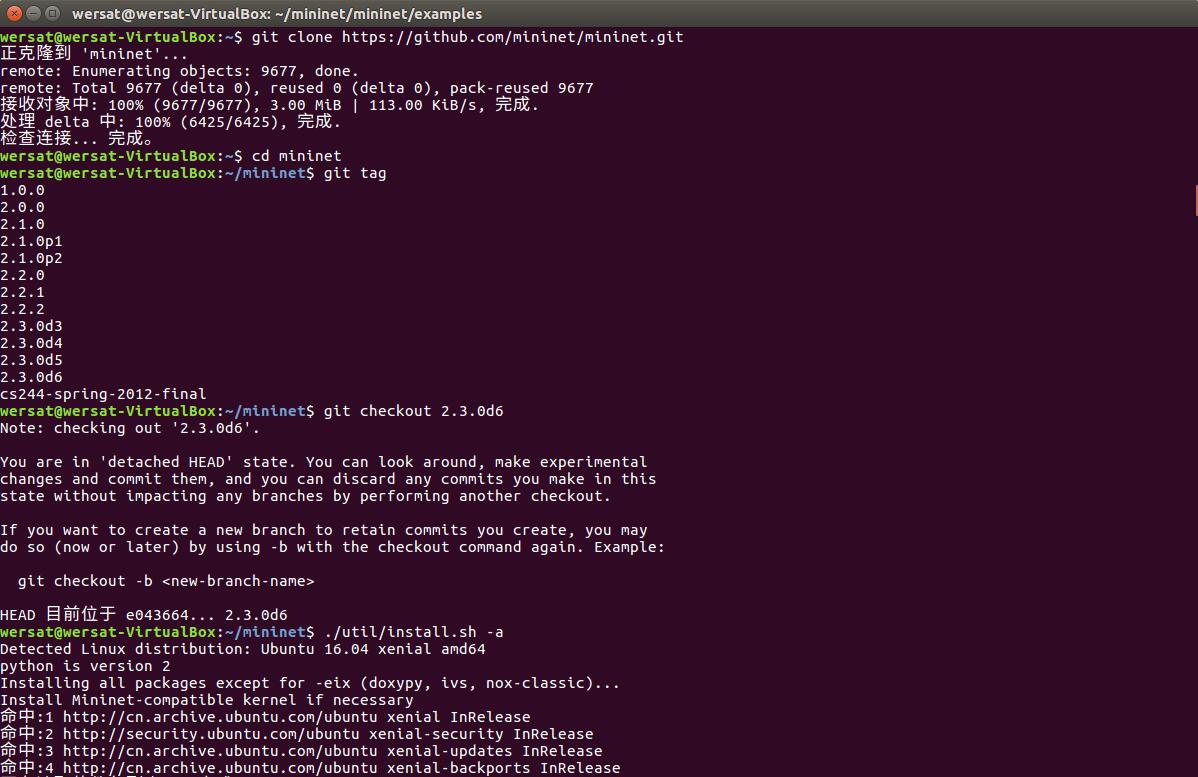

2. 用字符命令搭建如下拓扑,要求写出命令
输入命令:sudo mn --topo linear,3
输入命令:sudo mn --topo tree,fanout=3,depth=2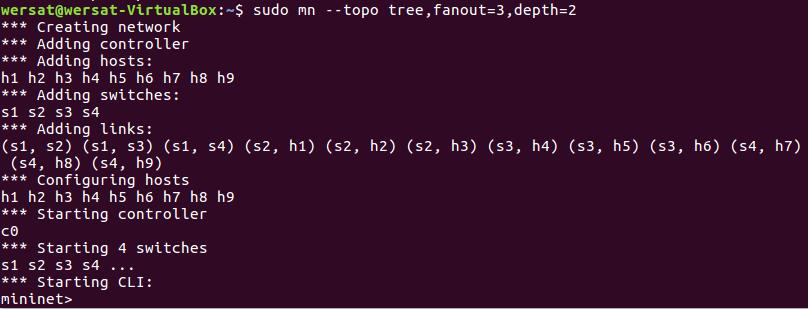
3.利用可视化工具搭建如下拓扑,并要求支持OpenFlow 1.0 1.1 1.2 1.3,设置h1(10.0.0.10)、h2(10.0.0.11)、h3(10.0.0.12),拓扑搭建完成后使用命令验证主机ip,查看拓扑端口连接情况。
可视化工具创建拓扑如下: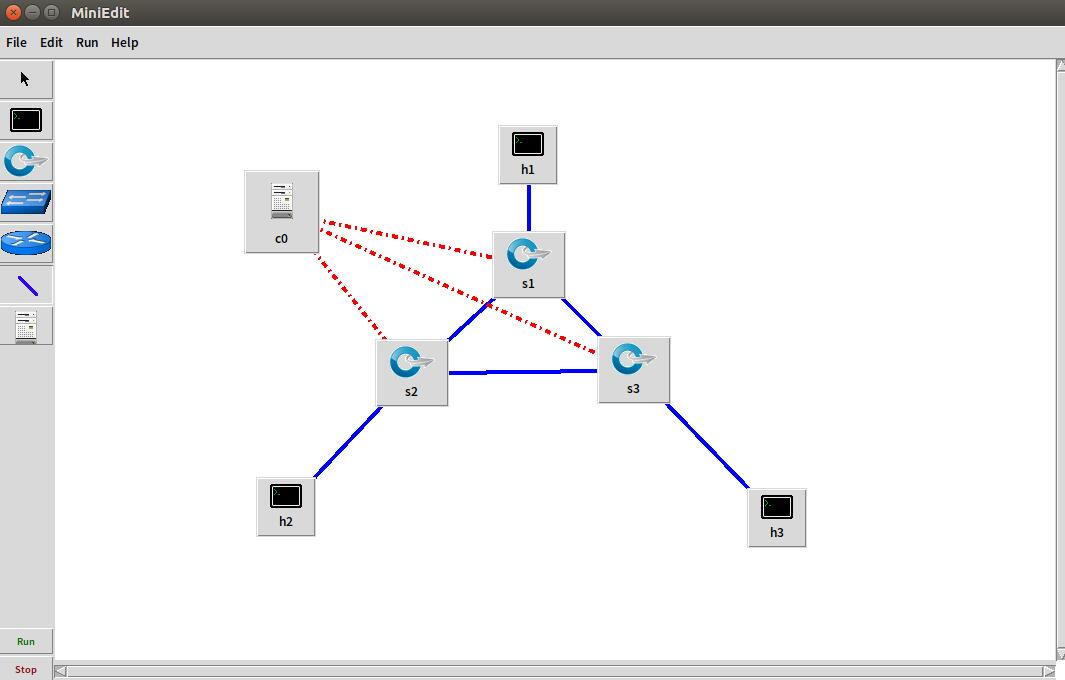
设置支持OpenFlow 1.0 1.1 1.2 1.3: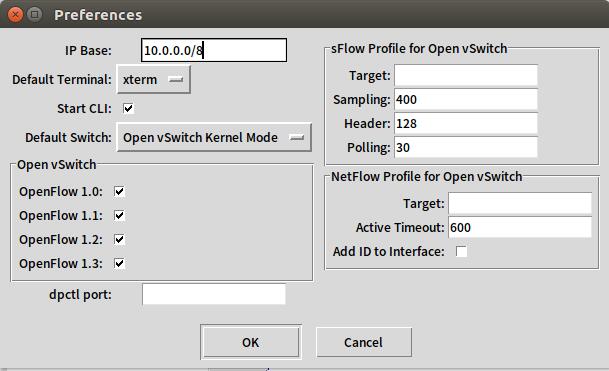
设置h1(10.0.0.10)、h2(10.0.0.11)、h3(10.0.0.12):
点击RUN运行:
验证主机IP,输入Xterm h1 h2 h3,再分别输入ifconfig:
4. 利用Python脚本完成如下图所示的一个Fat-tree型的拓扑(交换机和主机名需与图中一致,即s1~s6,h1~h8,并且链路正确,请给出Mininet相关截图)
Python代码:
from mininet.topo import Topo
from mininet.net import Mininet
from mininet.node import RemoteController,CPULimitedHost
from mininet.link import TCLink
from mininet.util import dumpNodeConnections
class MyTopo( Topo ):
"Simple topology example."
def __init__( self ):
"Create custom topo."
# Initialize topology
Topo.__init__( self )
L1 = 2
L2 = L1 * 2
L3 = L2
c = []
a = []
e = []
# add core ovs
for i in range( L1 ):
sw = self.addSwitch( 's{}'.format( i + 1 ) )
c.append( sw )
# add aggregation ovs
for i in range( L2 ):
sw = self.addSwitch( 's{}'.format( L1 + i + 1 ) )
a.append( sw )
# add edge ovs
# add links between core and aggregation ovs
for i in range( L1 ):
sw1 = c[i]
for sw2 in a[i/2::L1/2]:
# self.addLink(sw2, sw1, bw=10, delay='5ms', loss=10, max_queue_size=1000, use_htb=True)
self.addLink( sw2, sw1 )
# add links between aggregation and edge ovs
#add hosts and its links with edge ovs
count = 1
for sw1 in a:
for i in range(2):
host = self.addHost( 'h{}'.format( count ) )
self.addLink( sw1, host )
count += 1
topos = { 'mytopo': ( lambda: MyTopo() ) }
使用命令sudo mn --custom fattree.py --topo mytopo --controller=remote,ip=127.0.0.1,port=6633 --switch ovsk,protocols=OpenFlow10运行,得到如下结果: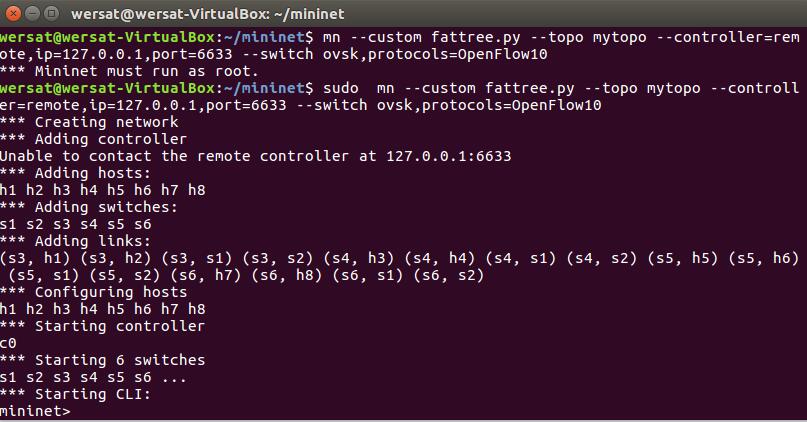
使用net查看拓扑: